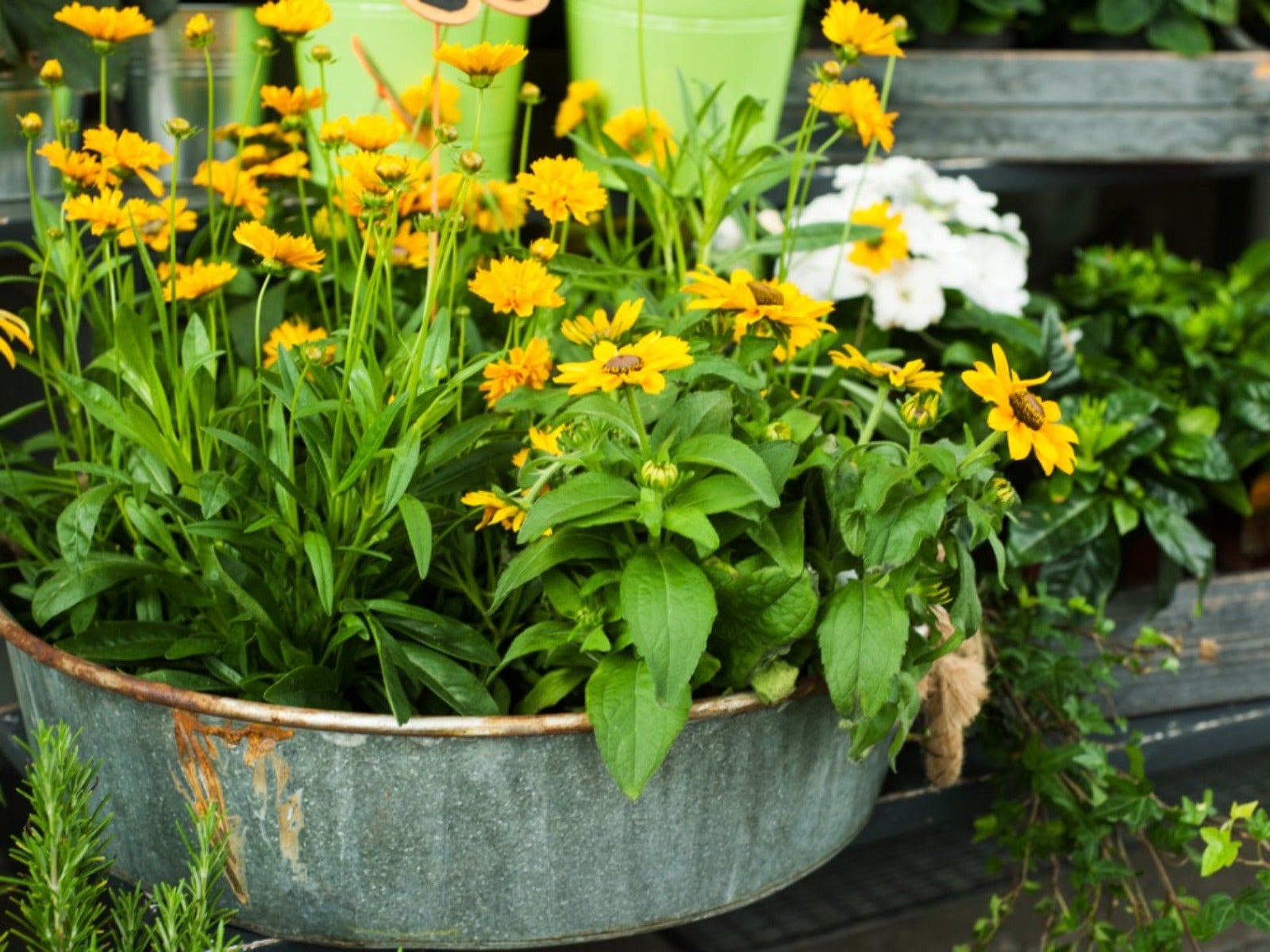Grow These 12 Natives Anywhere With Containers


Container gardening with native plants is a great way to fit more into a small space or simply to squeeze more natives onto your patio. While these plants don’t naturally grow in confined spaces, many take well to containers.
Growing Native Plants in Containers
Native potted plants require a little more care than those you put in a bed. Consider these important factors as you create a container garden for species native to your region:
Container Size
Size the container to the plant type, about two to four times the size of the pot in which it arrives. In general, native plants need larger, deeper pots than the typical annuals you might normally use. For shrubs or small trees, choose 24 inch (61 cm) or larger containers.
Potting Soil
Soil choice is more important in containers than garden beds. The soil in a pot will compact more quickly, resulting in poor drainage. Choose a high-quality potting soil or mix with additives like perlite for drainage.
Watering
Containers dry out much more quickly than garden beds. You can often neglect a native perennial in the garden for months with no issues if it rains regularly. Your potted perennials will need watering as soon as the top 2 inches (5 cm.) of soil have dried. Succulents need less frequent watering.
Sunlight
One of the benefits of native potted plants is that you can move them around for optimal sunlight. Understand the light and shade needs of the species you choose and experiment with pot location until you find what works best.
Attracting Pollinators
If you hope to attract butterflies and other pollinators to your container garden, use several plants of the same supportive species. It is harder for them to find individual small plants.
Sign up for the Gardening Know How newsletter today and receive a free copy of our e-book "How to Grow Delicious Tomatoes".
Native Plants Good for Containers
Your most important choice will be plant species. Start with natives from your region. Then consider which species are best suited to containers. Here are some ideas of North American native plants that grow well in pots:
- New Jersey Tea. Native well beyond New Jersey, this small shrub will grow to about 3 feet (91 cm) tall and provide sweet-smelling spring flowers.
- Walter’s viburnum. Grow this southern native in warmer climates as a small, shaped tree or a large shrub.
- Redbud. Eastern and Western redbud are species native to their respective regions of the U.S. They can grow well in large containers and provide gorgeous spring and fall color.
- Coral Honeysuckle. Avoid invasive honeysuckles but do embrace this pretty native. Just be sure it has a trellis, fence, or other structure to climb.
- Blue Star. Also known as Ozark blue star, this clumping perennial has pyramid-shaped clusters of delicate light blue flowers.
- Turtlehead. Turtlehead includes several species of Chelone that bloom in fall. The blossoms look like a turtle’s head, grow on tall spikes, and can be white or shades of pink and purple.
- Copper iris. This unique iris species is native and produces beautiful coppery red flowers. It will do well in a container in full sun if you can keep the soil consistently moist.
- Columbine. This pretty perennial produces drooping flowers in a range of colors. It will grow well in a container that drains very well.
- Coreopsis. Coreopsis is a dense clumping plant that suits a container. Deadhead the flowers regularly to keep it in bloom with cheerful yellow flowers.
- Wild ginger. For a native ‘spiller’ plant that will spill over the edges of a container, try wild ginger. The foliage is the main attraction, as the flowers are small and often hidden by the leaves.
- Little bluestem. This smaller ornamental grass is native to North America and very well suited to growing in pots. It provides an interesting textual element next to perennial flowers.
- Oak sedge. Similar to an ornamental grass, sedge is spiky and visually unique. Oak sedge has bright green leaves that grow in a round cluster and small flowers in late spring.
Native plant container gardening is a unique and rewarding challenge. Use natives in pots for smaller spaces, like balconies and patios, and to create a great environment for wildlife and pollinators.

Mary Ellen Ellis has been gardening for over 20 years. With degrees in Chemistry and Biology, Mary Ellen's specialties are flowers, native plants, and herbs.